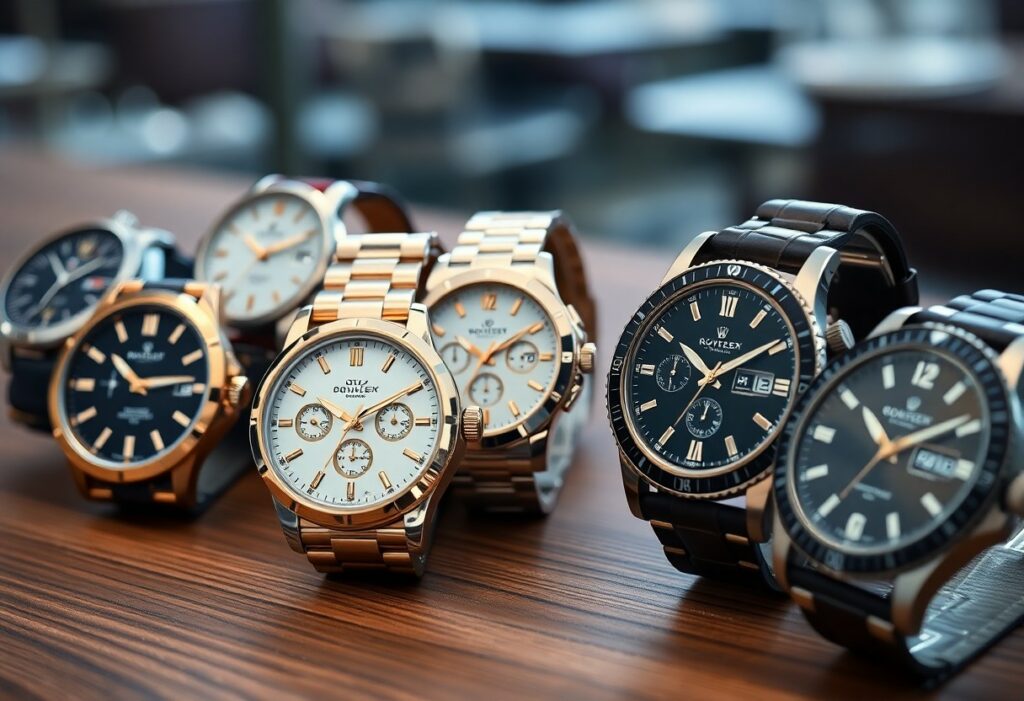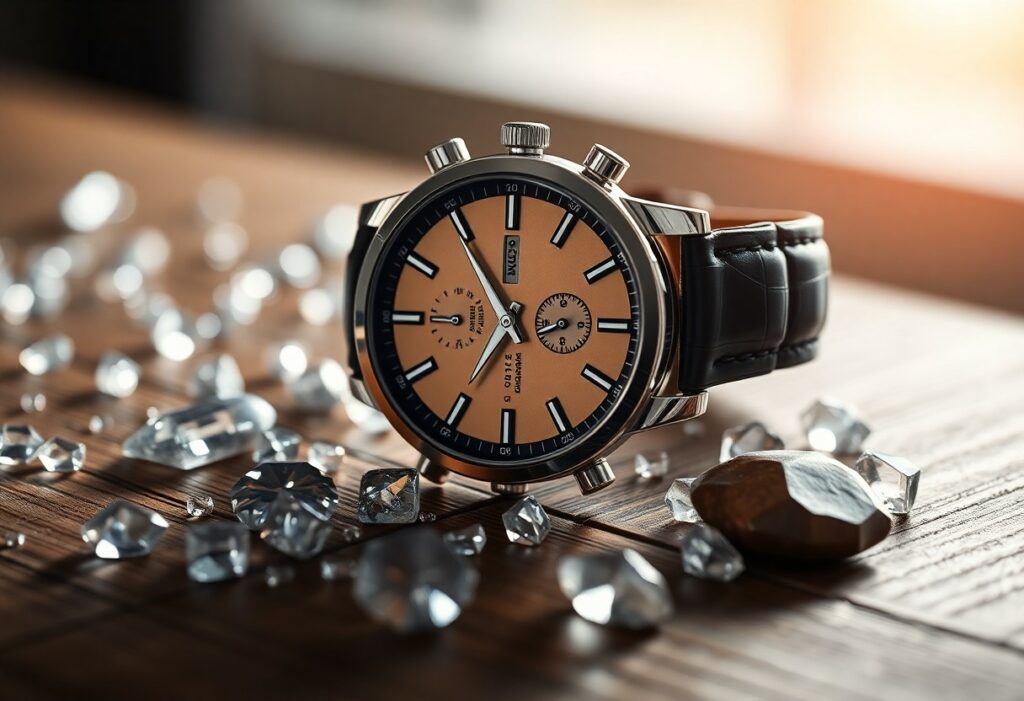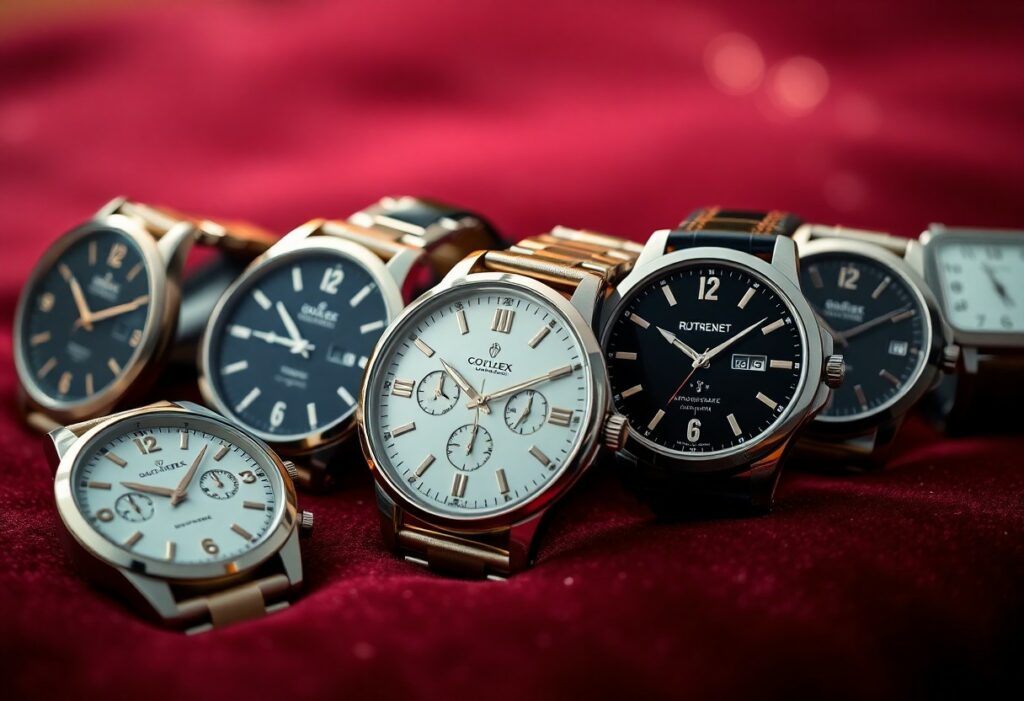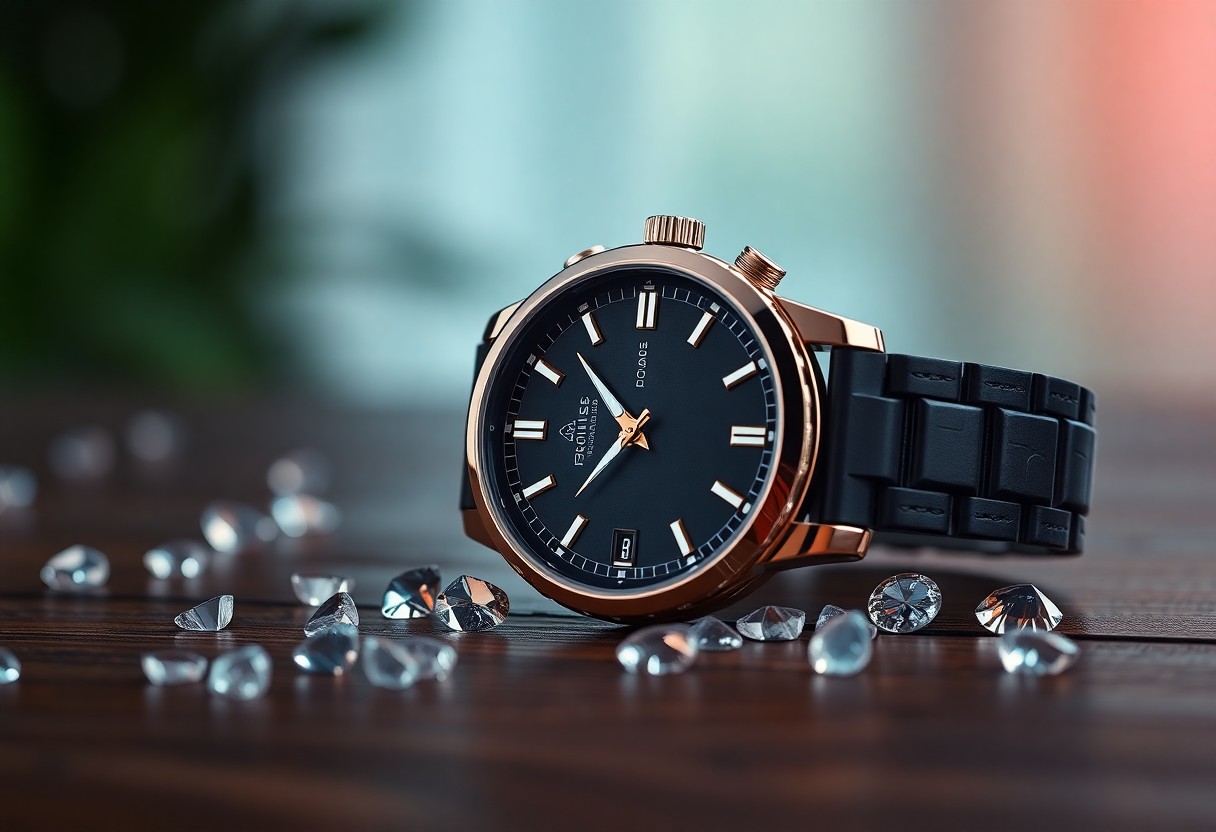Overwhelmed by the variety of automatic watches available, you may wonder how to find the ideal timepiece that suits your style and needs. This guide will help you navigate key factors like movement types, materials, and design to ensure your choice reflects both functionality and personal elegance. By understanding what sets these watches apart, you can confidently select a durable, sophisticated watch that complements your lifestyle and stands the test of time.
Key Takeaways:
- Automatic watches blend classic craftsmanship with modern technology, using the wearer’s wrist movement to power the mechanism, eliminating the need for batteries.
- When dicking out an automatic watch for men, consider movement type (Swiss or Japanese), material quality, design style, water resistance, and brand reputation to find the best fit for your lifestyle and preferences.
- Top brands like Seiko, Citizen, Timex, and Tissot each offer unique features and styles, catering to different occasions such as everyday use, formal events, or outdoor activities.
Understanding Automatic Watches
A well-crafted automatic watch represents more than just a device to tell time; it embodies a blend of intricate engineering and timeless artistry. When you choose an automatic watch, you are embracing a piece of horological heritage that relies on mechanical precision rather than electronic components. This choice reflects a deep appreciation for craftsmanship and a preference for a traditional yet innovative timekeeping method that has stood the test of time.
By learning about the workings and unique features of automatic watches, you gain insight into why these timepieces remain popular among enthusiasts and daily wearers alike. Understanding the mechanisms and differences between types of watches will guide you in selecting an automatic watch that perfectly complements your personal style and lifestyle.
Definition of Automatic Watches
Watches labeled as automatic, or self-winding, are powered by the natural motion of your wrist rather than by batteries. This means the internal mechanism winds itself as you wear the watch throughout your daily activities, allowing for continuous operation without manual winding or battery replacement.
This ingenious self-winding feature hinges on a rotor inside the watch that rotates with your movements. As the rotor spins, it tightens the mainspring, which stores energy to power the watch. When worn regularly, this process ensures the watch maintains accurate timekeeping effortlessly while showcasing mechanical mastery.
How Automatic Watches Differ from Quartz and Manual Watches
Definition plays a vital role in differentiating automatic watches from quartz and manual types. Quartz watches function using a battery-powered electronic oscillator regulated by a quartz crystal to keep highly accurate time. In contrast, manual watches require you to wind the mainspring by hand regularly to store energy needed for operation.
Automatic watches combine the mechanical nature of manual watches with the convenience of self-winding, eliminating the need for daily winding while maintaining a mechanical heart. This unique feature bridges traditional craftsmanship and modern ease of use, positioning automatic watches as a middle ground between quartz accuracy and manual watch tradition.
Plus, automatic watches offer a level of mechanical complexity that quartz watches lack, often admired by collectors and enthusiasts for their engineering beauty. Manual watches provide a direct connection to horology but demand more involvement from you. An automatic watch gives you the benefit of mechanical operation without constant upkeep, making it a practical yet sophisticated timepiece choice.

Types of Automatic Movements
Little variations in automatic movements distinguish watches by both performance and origin. Primarily, you will encounter Swiss and Japanese automatic movements, each bringing distinct qualities to the table. Swiss movements, like those used by Tissot, emphasize precision and luxury craftsmanship, often including complex features and fine detailing.
Japanese movements, well represented by Seiko, are celebrated for their durability, innovation, and cost-effective reliability. These movements offer excellent performance suited for everyday use and robust wear. When evaluating automatic movements, consider factors like accuracy, maintenance needs, and special complications that may enhance your watch experience.
| Movement Type | Key Features |
|---|---|
| Swiss Automatic | High precision, crafted elegance, advanced complications |
| Japanese Automatic | Durability, innovation, value for money |
| In-House Movements | Brand-specific designs, exclusivity, refined engineering |
| Third-Party Movements | Standardized, widely available, reliable performance |
| Skeleton Movements | Visible mechanics, artistic design, detailed craftsmanship |
The type of movement you select will influence not only the aesthetics but also how you interact with and maintain your watch over time.
To deepen your understanding, note that some brands develop proprietary movements tailored to their style and performance standards, while others rely on trusted third-party movements known for reliability. Additionally, skeleton automatic watches provide a transparent view of the movement’s mechanical artistry, catering to enthusiasts who enjoy observing their watch’s inner workings.
| Movement Type | Advantages |
|---|---|
| In-House Movements | Unique design, superior quality control |
| Third-Party Movements | Cost-effective, easy to service |
| Skeleton Movements | Visual appeal, educational insight |
| Swiss Movements | Prestige, fine adjustments |
| Japanese Movements | Longevity, practical innovation |
The movement type you pick will be a defining element of your automatic watch’s personality and long-term enjoyment.

Pros and Cons of Automatic Watches
Even though automatic watches are admired for their blend of traditional craftsmanship and modern technology, they come with both benefits and limitations you should weigh before making a purchase. When you understand the pros and cons clearly, you can make an informed choice that suits your lifestyle and preferences.
| Advantages | Disadvantages |
|---|---|
| No battery needed; self-winds through wrist movement | Requires regular wearing or manual winding to maintain power |
| Showcases intricate craftsmanship and mechanical engineering | Generally higher maintenance and servicing costs compared to quartz watches |
| Durable and built to last with quality materials like stainless steel or sapphire crystal | More sensitive to magnetic fields and shocks, which may affect accuracy |
| Offers a timeless appeal that complements both casual and formal styles | Tends to be thicker and heavier than battery-powered watches |
| Often associated with prestigious brands and legacy watchmaking | Precision might be slightly lower than high-end quartz counterparts |
| Eco-friendly since it doesn’t use disposable batteries | Initial purchase cost can be higher depending on brand and materials |
| Wide variety of designs available from rugged to elegant | Water resistance varies widely and can limit use in certain environments |
| Functional art piece that can increase in sentimental value over time | Servicing every 3-5 years required to retain optimal performance |
| Can feature advanced complications like moon phases or chronographs | May lose or gain a few seconds daily, requiring occasional adjustments |
| Strong resale value for models from reputable brands | Complex mechanics make DIY repairs nearly impossible |
Advantages of Wearing an Automatic Watch
One of the main advantages you’ll experience with an automatic watch is its ability to keep running without the need for a battery, relying instead on your wrist movement. This means no worries about battery replacements, which makes it a sustainable and low-maintenance option for everyday wear. Additionally, the craftsmanship behind each automatic watch symbolizes a long tradition of horology, allowing you to carry a piece of mechanical art on your wrist.
Besides functionality, automatic watches make a statement of sophistication and personal taste. Whether you opt for a black automatic watch for men that easily matches different outfits or a luxury Swiss option from brands like Tissot, your timepiece becomes more than a tool – it becomes a part of your style identity. Wearing one not only connects you to the heritage of watchmaking but also enhances your presence in both casual and formal settings.
Disadvantages to Consider
Any automatic watch requires a bit more attention compared to a quartz timepiece. If you don’t wear your watch regularly, the mainspring can unwind completely, causing your watch to stop. This means you’ll need to manually wind it or place it on a watch winder to keep it running smoothly. The mechanical complexity also means that servicing is necessary every few years to maintain accuracy and longevity, which adds to the overall cost of ownership.
Moreover, automatic watches are more susceptible to impacts, magnetic fields, and extreme environments than their quartz counterparts. This sensitivity can affect timekeeping precision and potentially damage delicate internal components. Therefore, if you lead a very active or outdoor lifestyle, carefully selecting a model with robust features and water resistance becomes necessary.
With proper care and understanding of these limitations, however, many enthusiasts find that the benefits outweigh the inconveniences. You’ll appreciate the rich mechanics and the tactile nature of winding and wearing an automatic watch that feels more like a piece of craftsmanship than merely a time-telling device.

Cost vs. Value Analysis
Consider that automatic watches generally come with a higher upfront cost compared to quartz models, particularly when you choose Swiss-made options like Tissot or refined Japanese movements from Seiko. You’re paying not only for the mechanism itself but also for the artistry, materials, brand reputation, and potential resale value. While these watches may seem expensive initially, their durability and timeless appeal often mean they serve you well for many years.
Additionally, the ongoing maintenance costs, such as servicing every 3-5 years, contribute to the total ownership expense. However, when you evaluate the watch from the perspective of an heirloom or collector’s item, the value can extend far beyond just telling time, with some models appreciating in worth or maintaining strong resale potential.
A balanced approach to cost vs. value involves assessing how much you prioritize craftsmanship, brand prestige, and design versatility in your daily wear. Investing in a well-built automatic watch from a reputable brand provides you with reliability and a style statement that can last a lifetime, making it a worthwhile addition to your collection.
Key Factors to Consider When Choosing an Automatic Watch
Unlike quartz watches that rely on batteries, automatic watches harness the natural movement of your wrist to keep time, making their construction and components necessary to performance and longevity. When identifying an automatic watch, you need to evaluate several important elements that influence not only the watch’s functionality but also how well it matches your lifestyle and taste. These key factors include:
- Movement type and the quality of the mechanics inside
- The materials used in the case and bracelet for durability and comfort
- Design and style that align with your personal and professional needs
- Size and fit to ensure comfort during daily wear
- Water resistance level based on your activities
- Brand reputation and after-sales service for long-term satisfaction
Recognizing how these elements interplay helps you choose a watch that not only tells time but also reflects your individuality and supports your daily routine.
Conclusion: Elevate Your Timekeeping with Purpose
Choosing the right automatic watch isn’t just about functionality—it’s about finding a timepiece that reflects who you are. From understanding movement types to appreciating the artistry behind mechanical engineering, you’ve now seen how automatic watches blend timeless tradition with everyday practicality. They serve as more than tools—they’re symbols of refinement, character, and personal taste.
At Evolution Watches, we take this philosophy to heart. Each of our timepieces is crafted with precision, powered by the reliable Seiko NH35 automatic movement, and designed to reflect bold elegance and enduring quality. Whether you’re stepping into a boardroom, exploring the outdoors, or celebrating a milestone, an Evolution watch is built to move with you—effortlessly, reliably, and stylishly.
Because in a world that never stops evolving, your timepiece should do more than keep time. It should tell your story.
Evolution Watches – Where Time Begins and Style Evolves.




